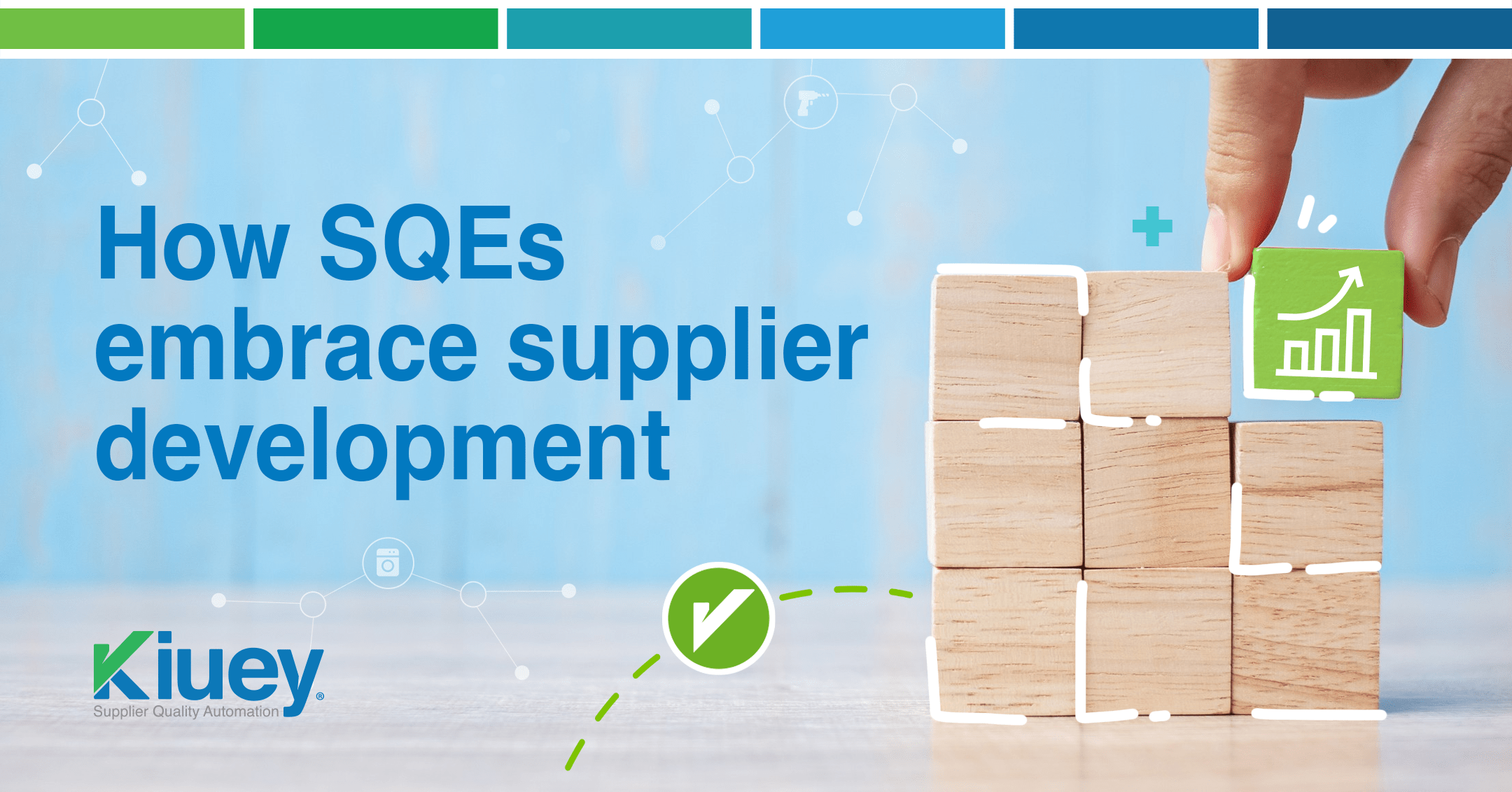
June 27, 2024
In today’s globalized market, the success of any organization depends heavily on the quality of its suppliers. Supplier Quality Engineers (SQEs) are the bridge between buyers and suppliers, ensuring smooth communication and adherence to quality standards. However, their role can extend beyond simply verifying conformance. By actively participating in supplier development programs (SDPs), SQEs can play a crucial role in empowering suppliers to enhance their capabilities and consistently meet the buyer’s quality requirements.
Understanding Supplier Development Programs:
SDPs are structured initiatives designed to improve a supplier’s capabilities in specific areas. These areas can encompass various aspects, including:
- Quality Management Systems (QMS): Ensuring suppliers have robust QMS like ISO 9001 in place demonstrates their commitment to quality. SQEs can guide suppliers through the implementation process, ensuring they understand and effectively utilize these systems.
- Manufacturing Processes: Identifying bottlenecks and inefficiencies in a supplier’s production processes can lead to quality issues. SQEs can assist in process improvement initiatives, sharing best practices and suggesting relevant technologies to enhance efficiency and reduce defects.
- Technical Expertise: Suppliers may require specific technical expertise to manufacture components or materials within the buyer’s specifications. SQEs can facilitate training programs focused on relevant technical skills, improving the supplier’s ability to meet quality requirements.
- Communication and Collaboration: Clear and open communication is vital for a successful buyer-supplier relationship. SQEs can work with both sides to establish effective communication channels and foster a culture of collaboration, allowing for early identification and resolution of potential quality issues.
The role of SQEs in Supplier Development
SQEs bring a unique skillset to the table, making them valuable assets in any SDP. Here are some key ways they can contribute:
- Needs Assessment: SQEs can conduct thorough needs assessments to identify areas where a supplier requires the most support. This could involve analyzing supplier performance data, conducting facility audits, or engaging in open discussions with the supplier’s quality team.
- Program Development: Based on the needs assessment, SQEs can collaborate with procurement, engineering, and other stakeholders to develop a tailored SDP roadmap. This roadmap should define specific goals, timelines, and resources required to achieve targeted improvements.
- Training and Capacity Building: SQEs can facilitate training sessions for the supplier’s workforce, addressing identified knowledge gaps or introducing new quality control techniques. This can involve in-person workshops, online training modules, or even on-site mentoring programs.
Implementation Support: Once training is complete, SQEs can help the supplier implement the learned concepts. This could involve assisting with quality system documentation, process improvement initiatives, or troubleshooting implementation challenges. - Monitoring and Evaluation: Regular monitoring and evaluation are crucial to measure the effectiveness of the SDP. SQEs can work with the supplier to track progress, analyze data, and identify areas for adjustment within the program.
Benefits of SQE involvement in supplier development
Active participation of SQEs in SDPs leads to several benefits for both the buyer and the supplier:
- Improved Supplier Quality: By addressing skill gaps and inefficiencies, suppliers can achieve higher quality standards and reduced defect rates. This directly benefits the buyer by leading to a more reliable supply chain and fewer quality-related disruptions.
- Enhanced Supplier Relationships: Collaboration and shared goals fostered within an SDP strengthen buyer-supplier relationships. Open communication and trust can help overcome challenges and resolve quality issues more effectively.
- Reduced Costs: Improved quality from suppliers translates to less rework and fewer warranty claims for the buyer. Additionally, enhanced supplier capabilities can lead to cost reductions for the supplier as well, creating a win-win situation.
- Innovation and Continuous Improvement: A collaborative environment fostered through an SDP can encourage innovation and continuous improvement efforts on both sides. Shared knowledge and expertise can lead to the development of new, more efficient manufacturing processes or advanced quality control methods.
Creating a Successful Partnership
For SQEs to effectively contribute to an SDP, a few key elements are essential:
- Clear Communication: Building strong communication channels with both internal stakeholders and the supplier is crucial. Regular updates and progress reports ensure everyone is on the same page.
- Mutual Respect and Trust: An SDP thrives on a foundation of mutual respect and trust between the buyer and supplier. SQEs should act as facilitators, not enforcers, creating an environment where open discussions and collaboration can flourish.
- Long-Term Commitment: SDPs are not one-time solutions. SQEs should be prepared for a long-term commitment, continuously monitoring progress, adapting the program as needed, and building long-term supplier relationships.
By actively participating in SDPs, SQEs can transform their role from mere quality checkers to strategic partners. They can play a crucial role in developing a network of capable suppliers who consistently meet the buyer’s quality requirements
Let's talk to see how PPAP Manager can help your company to save time and money.


